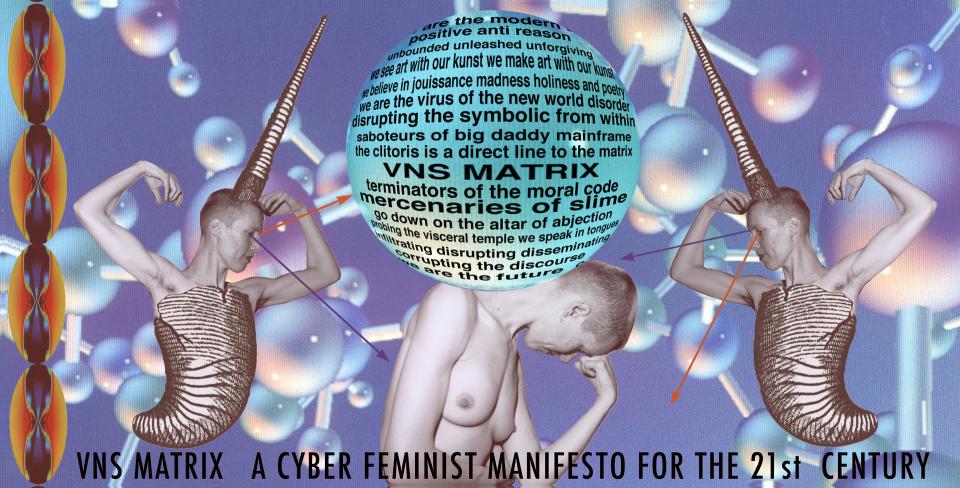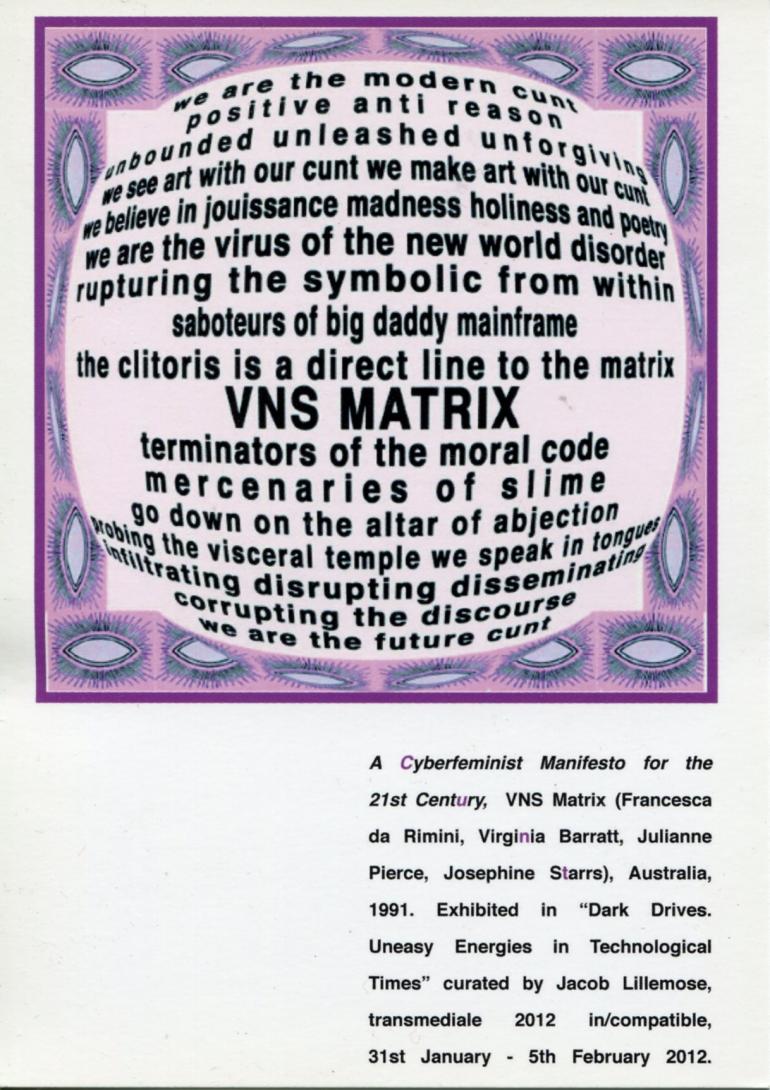
I’m reminded of that then-radical phrase, “Women’s rights are human rights.” When women stood up in Beijing more than 20 years ago, they were daring to speak out about a multiplicity of identities that had until then been all but ignored in human rights language, laws and implementation.
Today, feminist movements and organisations have gone far beyond “Women’s rights are human rights” by intentionally practising more intersectionality and expanding the idea of “women’s rights” and “women’s issues” to a feminist, political framework that is applied to issues ranging from climate justice to drug policy. During this time, technology has drastically altered the landscape of human rights. Social movements and human rights organisations are struggling to deal with human rights violations that are being facilitated and perpetuated by those in power and their technology. Tech corporations are more powerful than many governments around the world.
Today, feminist activists are claiming that digital rights are human rights, too. There is a robust community of feminist organisations, collectives, activists and more who are striving to strengthen digital rights. Amongst them, cyberfeminists, especially from the global South, are going deeper into making digital rights a reality for women, LBT individuals, non-English speaking people in the global South, and more. When cyberfeminists are saying that digital rights are human rights, they are creating subversive solutions and alternative realities. They are building the human rights framework with a digital perspective and the digital architecture that we need for the future that we desire.
Today, feminist activists are claiming that digital rights are human rights, too. There is a robust community of feminist organisations, collectives, activists and more who are striving to strengthen digital rights.
Technology is not liberatory – yet
It’s often said and it’s still the elephant in the room, but technology is still too white, neoliberal and global North-dominated a space for transformational human rights and social movements to happen. The cost of access is still too high, the language too coded, and the sector too male for young, female-identifying, non-binary, low-income and global South-identifying persons to participate, let alone influence and change. When it comes to social movements, if we were to look at the grand scale of things, technology is still being used to repress more than it is being used as a liberatory tool. We have paid a high price for organising our communities through Facebook, WhatsApp and more. Still, they are the mass tools that most people have access to right now.
This means that the spaces where we can have very radical, feminist, decolonial conversations about our rights and lives on the internet are still limited, even in spaces that are supposedly talking about the intersection between human rights and technology. I attended the Internet Freedom Festival (IFF), its fifth edition in Valencia this year, and what I saw confirmed my initial gut reaction.
Although it seems like an apocalyptic future for us on the internet, cyberfeminists are creating important perspectives within digital rights work that are key to creating more radical access, inclusion and implementation of tech tools that our movements desperately need. And they are going above and beyond; discontent with extremely blocked negotiations over internet protocols and the stacked odds against activists, they are building their own universe on the internet. A digital world that is truly the one that we deserve: where we have more than our rights; we also have the pleasure to enjoy our identities, practise our sexualities, meet new people, access information and make informed decisions about risks and pleasure.
Although it seems like an apocalyptic future for us on the internet, cyberfeminists are creating important perspectives within digital rights work that are key to creating more radical access, inclusion and implementation of tech tools that our movements desperately need.
Cyberfeminists in the past – and today
Cyberfeminists, although significantly different today from the cyberfeminists of the past, are still connected to this ideological and artistic heritage. In the 1990s, feminist artists mostly from the global North created an artistic movement called cyberfeminism that propagated an empowered, disembodied future. One of the most attractive things about the internet and all things digital was that there, you were supposedly an equal. Nobody would treat you differently based on what you looked like and what your sex or gender was, or so many cyberfeminists believed – they wanted an internet where sex and gender could dissolve. Many critiques of cyberfeminism have focused on its lack of intersectional focus, its utopian vision of cyberspace, especially cyberstalking and cyber-abuse, its whiteness and elite community building.
Fast forward to today when feminists from around the globe have fought to have gender-based violence (GBV) on the internet recognised as legitimate violence and for the legal right for it to be prosecuted as such. Today, there is substantial evidence that proves that your offline identify affects how you are treated and discriminated against on the internet. Cyberfeminists today understand that there is no such thing as a future without the internet and technology. We live firmly within the digital era. Online and offline are part of a false binary – technology and the internet literally change our physical lives. For the majority of people who live outside of places such as the European Union with their strict data protection laws, their digital lives are subject to much more surveillance, tracking, violence and danger.

A Cyberfeminist Manifesto for the 21st Century by VNS Matrix.
Cyberfeminists combat universalism
Cyberfeminists are therefore adapting human rights tools within technology for their own communities and contexts within the global South. For example, La Tormenta, a cyberfeminist collective based in Mexico City, started as a collective by trying to address the structural problems of using Tor in a non-English speaking country. They understood that although digital security activists had the best intentions in talking about and teaching Tor to their communities, Tor had been conceived of and always written about in English. When those instructions were translated into Spanish, they still resulted in very technical language that was not comprehensible to the majority of the population.
One of the exercises that La Tormenta did at this year’s IFF was a Spanish-speaking session where they presented their work and principles and distributed a sheet of paper with instructions on how to use Tor that had been translated into Spanish. We divided into working groups and attacked those instructions. My group scribbled all over the sheet; we thought that many of those words were not commonly used in Spanish; we added instructions to include illustrations – we essentially made sure that those instructions for how to use Tor would be used.
The universalism present in much digital rights work shows that this sector is still hugely lacking in diversity and mostly grounded in the global North. There is work to be done in addressing issues of language, context, culture and politics in order for many of these tools to be actually implemented and used by activists and their communities in the global South. Cyberfeminists of today practise one of feminism’s central tenets – to escape a patriarchal, universalist logic and be aware of the specifics and marginalities of people’s identities and experiences.
Cyberfeminists of today practise one of feminism’s central tenets – to escape a patriarchal, universalist logic and be aware of the specifics and marginalities of people’s identities and experiences.
Cyberfeminists translate consent on the internet
Consent is another feminist principle that plays out on the internet. You will often find cyberfeminists talking about consent, data privacy and surveillance in a different way from other data privacists or human rights folks in technology. That’s also partially because female-identifying and queer individuals experience invasions of privacy and stalking differently on the internet. Cyberfeminists claim that sexual violence on the internet and data harvesting are two types of violations of our human right to privacy and bodily dignity. To illustrate this, they have invented the concept of digital bodies.
In a session at the IFF intentionally in Spanish, Ledys Sanjuan Mejia, from FRIDA, Sara Muñarriz Awad from Fondo de Acción Urgente, Fernanda Sharakawa, currently a fellow with Digital Defenders, and Paola Mosso from The Engine Room, were in conversation about the specificities of digital bodies on the internet.
To start the conversation, Sara Muñarriz Awad explained, “To think about digital bodies helps us to humanise our digital experience. ‘Bodies’ [as a concept] is a feminist strategy to think about holistic health, to connect to our issues. To create and live our digital bodies – and always with consent.”
Continuing the logic of digital bodies in a metaphor that most every female-identifying person understands too deeply, Mosso used the metaphor of “digital streets” and how cyberfeminists are integrating a perspective of feminist care and consideration for each other on these streets. “We are saying to each other, if you want to walk on this specific street, then walk – but be careful. And we should be warning each other about things, like on this street, there isn’t any light, so I’ll be crossing the street to the other one.” This is a feminist interpretation of risk mitigation on the internet, because digital security isn’t about just the risks, but about living our lives on the internet and being aware of the risks, making decisions that are informed, instead of being in the dark about the consequences and danger.
When feminists are talking about bodies, they are almost always talking about violence and power as well. In the world that we live in, our bodies are not our own, and this is no different on the internet. Digital bodies then becomes a term that we can use to reclaim the necessity of consent on the internet. Different women from different organisations led numerous sessions at the IFF about the importance of exercising consent in data harvesting and how to protect our boundaries – our digital bodies – in a time where saying that you want a cup of coffee out loud means that you see an ad from a coffee company on your Instagram on your phone five seconds later.
When feminists are talking about bodies, they are almost always talking about violence and power as well. In the world that we live in, our bodies are not our own, and this is no different on the internet. Digital bodies then becomes a term that we can use to reclaim the necessity of consent on the internet.
The Digital Defense Playbook: Community power tools for reclaiming data, written by community activists Mariella Saba, Tamika Lewis, Tawana Petty and Seeta Peña Gangadharan, illustrates this concept beautifully. At their IFF session, they asked us to first come into being with our bodies. We stood up and assumed a comfortable position and froze in this position. Then they asked us to remember a time where we felt tracked and surveilled – such as in an airport or another place where authority and closed circuit surveillance cameras are common. Our body positions immediately changed. Through simply walking through a physical space with other participants and powerfully imagining different places, we expressed how our bodies physically and psychologically reacted to the repercussions of a digital age in which our images and data are being harvested for corporate gain and government repression.
Around the world, closing civic space has meant the repression of social movements and crackdowns in real life – raids on activist spaces, activists’ homes, violence against protestors, targeted murders of high-risk activists, and increasing criminalisation of activism. Digital movements have changed things, but when activists are on the internet, they are putting themselves at risk in a different way.
Sanjuan Mejia said that “technopolítica” or “technopolitics” is a term that can help us to understand what is the role of technology in an increasingly dangerous political context around the world and in a digital era. “We should think about how technology should be helping our movements to reposition and strengthen ‘offline’ movement organising.”
**
Technology is a contested ground where the odds are incredibly stacked against the majority of the population. Activists and their communities are not just demanding accountability; they are practising radical inclusion and politicising digital rights because this is the only way to make digital rights a human rights-based area of work. Part of feminist principles includes contesting universalism, as universalist frameworks and practices are always written by those who have access to power and language and represent the minority. They are the ones who can write frameworks and those who build infrastructure for everyone else. The majority of the world’s population simply don’t identify themselves with them. Feminists know that if they do not fight for their rights on the internet, they will not be given to them, even by those doing digital rights-expanding work. In this space, cyberfeminists are not just fighting for their rights; they are building critical new pedagogies, and even new infrastructure.
- 14146 views






Add new comment